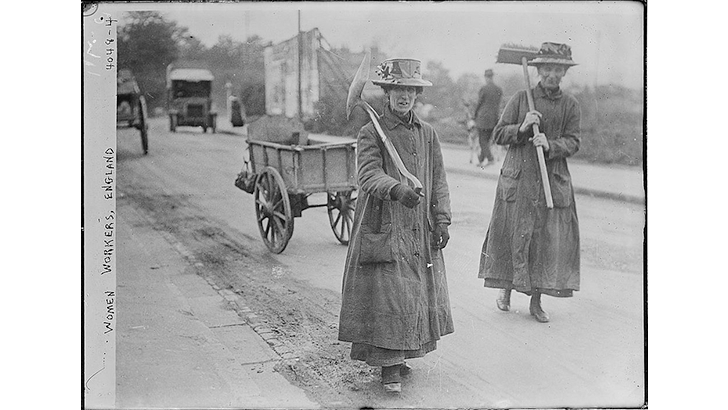Reflections from a Bread Winner and Milk Producer
I’ve been trying to write this one drat sentence, in fits and starts, for the past twenty minutes—probably because it’s lunch time and I’m home today on a snow day (very rare where we live). But, with little ones at home, a “snow-nus” (as I used to refer to them) is no longer a bonus for getting work done. It’s a structure-disrupter.
As sole “bread-winner” and milk producer in our family of four, rhythms and structures have been key—marking my days and spaces for the varying tasks and roles and developing muscle memory and body and mind expectations for thoughtful productivity. For example, when I discovered I was pregnant with baby two, it was at the beginning of spring semester. Even while sorting out the existential components of preparing to bring another human being in the world, I knew I needed to address the structures that would allow me to do so and maintain the job that I love and upon which we financially depend. Gratefully, my institution was supportive. I was afforded an entire twelve weeks of family leave time (and baby two’s timing was such that she tacked on a couple of extra for winter break between semesters). I was also able to advocate for class-times in my subsequent semesters in order to make pumping intervals possible.
I knew that wouldn’t be enough, however, so upon the baby’s arrival, I started these practices:
- I found myself ignoring common recommendations about on-demand feeding patterns and began to train my body a little earlier than recommended for the class-schedule intervals.
- I also began pumping after feedings to get any excess and to increase milk supply toward my projections for what this baby might need in months four through six (when she would be taking in the most and when I would no longer be at home for her to do so).
- It turns out that I projected with ample extra, so we purchased a small deep freezer and began storing the excess to allow an early end to pumping, a longer stint without formula or cow’s milk, and/or to mix with cereals when the little one started on solid foods.
It’s exhausting just typing it.
It worked, though. I was able to earn bread, bring home bacon (as a non-pork eater, that might be pushing it a bit too far), and also produce milk, which saved the family some dough (had enough?).
I never would have been able to do it without developing helpful patterns and rhythms. No doubt, such rhythms will differ from person to person and context to context. They will differ in my own life as my babies grow and their needs of me change. But there has been something life-giving to the cultivation of these rhythms. They have been the skeleton holding me upright. As such, they hold my sanity, my wellness, and my family together. I’ve come to believe there’s something of God/ess(es) in the:
rhythm and rootedness
the source and sustainer of life
and home
that which cannot be contained
slipping through the cracks
between bodies
between worlds.
God/ess(es) leaks.
The word “leak” has, well, leaked (yeah, I said it) into my everyday vernacular. It’s a metaphor for the pieces that hold these rhythms together. It’s indicative that compartmentalization is not an option. Being a potential leak-risk holds me to my patterns. It calls me to stop every three hours and breathe deeply (for if I don’t, the milk simply may not flow). It calls me to remember my loved ones who depend upon me. It reminds me that I am not an academic robot, or even just my brain, but a mammal (although sometimes I feel far more bovine that I’m comfortable with). Luckily, each pump-session doesn’t last forever, and after twenty(ish) minutes, I’m free to go back to the other pieces of my life and work that I love, reminded that I’m not alone and that I’m alive.
I hate pumping. But I am so grateful that I can produce milk and that I can do other meaningful work. If it weren’t for my rhythms and patterns, there’s no way I could continue to provide both bread and milk for my growing family. To me, that’s a pretty big deal. (However, let’s be honest, I am very much looking forward to wearing bras without front flaps again one day soon.)
Cassie Hillman Trentaz is an associate professor at Warner Pacific College in Portland, Oregon, where she lives with her artist husband and their two preschool aged children and where she teaches within and across the areas of theology, ethics, church history, and religions of the world. Author of Theology in the Age of Global AIDS & HIV: Complicity and Possibility (Palgrave Macmillan, 2012), Trentaz is a teacher-activist-scholar and a partner-parent-neighbor nurturing connections across lines that often divide in the academy, religion, and society and cultivating porous spaces between the classroom and neighborhood.
Image: "Women workers, England," between ca. 1915 and 1920. Library of Congress Prints and Photographs Division Washington, DC.






